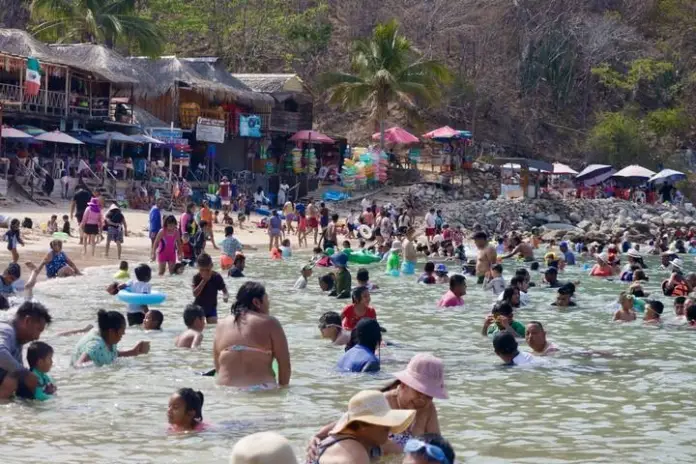
The Federal Commission for the Protection against Sanitary Risks (Cofepris) has issued an alert indicating that some beaches in Huatulco and Puerto Escondido, Oaxaca, are not suitable for recreational use due to high levels of contamination.
In a recent study that analyzed the presence of enterococci in the water, Cofepris identified that the beaches “La Bocana” in Huatulco and “Puerto Angelito” and “Playa Principal” in Puerto Escondido, present levels of contamination that exceed the maximum limits allowed by the World Health Organization (WHO).
The study was part of a broader evaluation that involved the collection of more than 2 thousand samples of sea water in 76 tourist destinations throughout Mexico, carried out in coordination with state health authorities. In total, 2,315 samples of sea water obtained from 393 points in 289 beaches were analyzed.
Despite the problems identified in Oaxaca, the report reveals that 93.8 percent of Mexican beaches are suitable for recreational use. Of the 289 beaches monitored, 271 meet the water quality standards established by the WHO.
In addition to the beaches in Oaxaca, 15 other beaches in Baja California, Colima, Jalisco and Veracruz also exceeded the maximum levels of enterococci allowed. Authorities are coordinating immediate sanitation actions in these areas to ensure that conditions are safe for visitors.
Cofepris urges the population to contribute to the cleaning and conservation of beaches during the holiday season and throughout the year. The preservation of these natural spaces is a shared responsibility, and maintaining their cleanliness is crucial for public health and everyone’s enjoyment.
Authorities from Cofepris and the State Health Risk Protection Areas (APCRS) will continue to monitor the affected beaches and make ongoing efforts to ensure that all beaches in the country are safe for vacationers.
Enterococci are a group of bacteria commonly found in the intestines of humans and other animals. These bacteria can be indicators of fecal contamination in bodies of water such as seas, rivers, and lakes.
Health risks from enterococci
Infections: Although enterococci are generally not pathogenic in the intestine, they can cause infections if they enter the body through open wounds or mucous membranes. The most common infections are urinary tract infections, wounds, and in some cases, more serious infections such as endocarditis.
Diseases: Exposure to water contaminated with high levels of enterococci can cause gastroenteritis, skin, eye, ear, nose, and throat infections, as well as respiratory diseases.
Source: elheraldodechiapas




